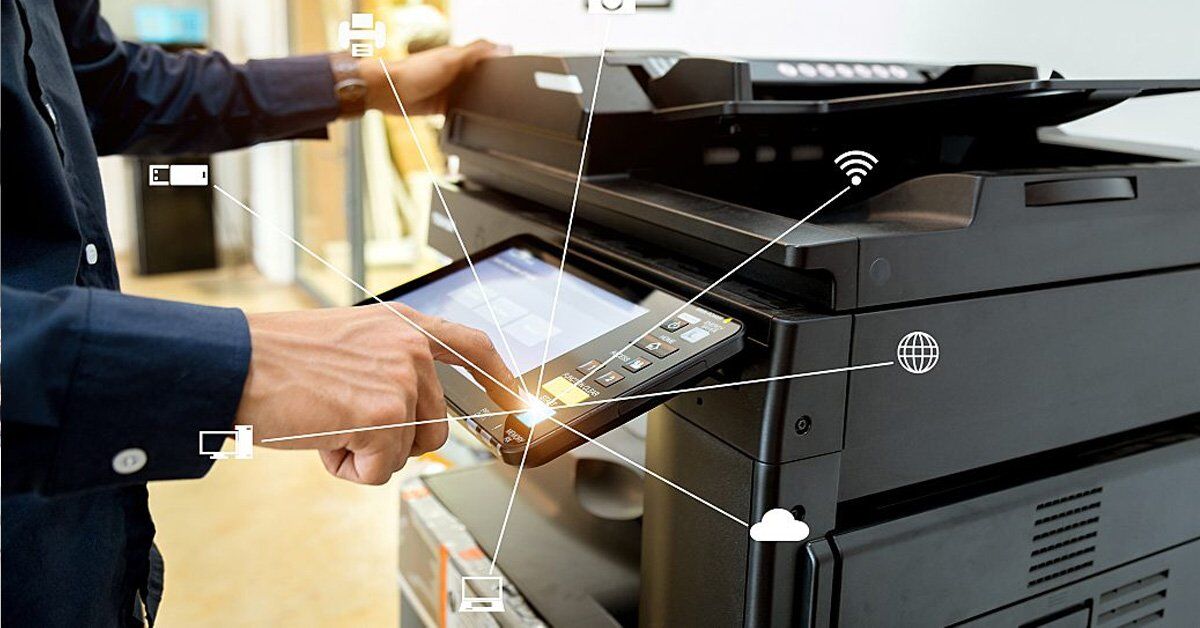Security Risks in the Print Industry
4 min read

Cybersecurity threats are a talking point on the news, social media, and even at the water cooler. This is not surprising, with attacks happening at a record level, 2019 seeing a 54% increase in data breaches.
But one area that often gets missed out of the statistics is print security. Our humble printer may, however, be a center of vulnerability in our organization. Here we look at some of the security risks associated with our print environments and how we can minimize those risks.
The Printer and the Wider Threat Landscape
Once, the printer stood alone in the office. Connected to a company network at best. Now, printers are connected up to the wider Internet. Cloud printing has revolutionized the office stalwart, the printer. Internet-enabled printers allow employees to print from any location, enabling multisite printing and remote working. You can even print directly from any device including mobile.
However, like other areas of the network, once opened up to the internet, nefarious elements can also enter. In 2019, Quocirca published a study on the issues of security in print environments. The “Global Print Security Survey 2019” found 60% of businesses had been a victim of at least one print-based data loss and 11% of all security incidents were print related.
The Areas of Risk with Modern Print Environments
The entire lifecycle of a print job has areas of risk associated: from sending the print job file to a printer, up to and after the document is printed out. Some key points of vulnerability are:
Sending the print job: The data you send to a printer can contain very sensitive and/or personal data. These data need to be protected in the same way you would secure data on any other network area. The data file(s) sent to a printer must be done so using secure mechanisms. This is usually in the form of encryption. There are a number of cloud print management solutions that will ensure you have a secure print environment, encrypting all traffic between device, queue, and printer.
Malware risks: Infection from malware is a risk area in printing. The Quocirca survey found that 70% of organizations are concerned that printers could be infected by malware. Security researchers from the NCC Group demonstrated how printers can be infected with botnet malware and used to attack websites and other web servers. Printers can also be used as phishing bait. Security vendor Comodo described how a Konica Minolta C224e printer was spoofed by cybercriminals to send phishing emails containing ransomware infected scan attachments to employees.
Hack attack: If the printer firmware is not patched when new updates come out, it could open up vulnerabilities on the network.
No port in a storm: Internet-connected printers sometimes use open, unsecured ports, to connect. This can be exploited by fraudsters as was demonstrated recently when 50,000 unsecured printers were hijacked as part of a stunt. The printers were used to print leaflets supporting the YouTuber, PewDiePie.
Out in the open: Once printed, the document is vulnerable to theft or just being in plain sight. Printers are often housed in high-traffic areas, and you can’t always be there when the print job comes off.
5 Tips to Secure Your Print Environment
With these risks in mind, how do you secure your print media?
- Ensure you use a printer and print service that ensures security is integral in its system design. Printers and services from the manufacturer Hewlett Packard (HP), for example where they use the mantra “Every printer decision is a security decision”. HP uses a layered approach to security, detecting anomalies, alerting IT, and responding to threats.
- Have a print policy in place that manages print jobs from a user perspective. Making sure that if anything sensitive is printed, it is immediately picked up from the printer.
- Enforce the print policy using tools such as secure print release, whereby a print job is sent but only released to print when an individual is ready to pick the document up – this is often controlled using QR codes, PIN codes, biometric, etc., on mobile devices and similar.
- Ensure that any internet-connected printers and associated peripherals such as copiers are always patched and up to date.
- Use the services of a Managed IT Service Provider (MSP) who can ensure you have the best-of-breed in both printing capability and security.
A printer is a final point where often sensitive information is released into a public forum. As such, it should not be a forgotten endpoint where security is concerned. Cloud printing offers a lot of benefits, including ease of use across multiple sites and users. But as we add printers to the wider internet-connected network, we need to ensure our security strategy includes printers.